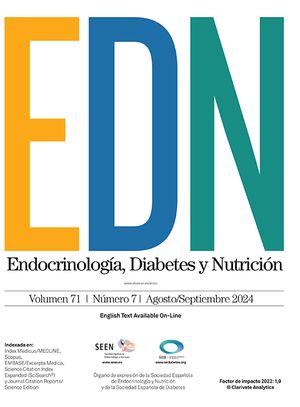Los tumores neuroendocrinos gastroentropancreáticos derivan de las células neuroendocrinas dispersas a través del tracto gastrointestinal y del páncreas endocrino. El desarrollo embriológico del páncreas es un proceso complejo que se inicia a partir de células madre pluriplotenciales que provienen del endodermo, y que atraviesa 2 fases: la primera transición, en la que la célula madre se diferencia en células exocrinas y endocrinas y que está mediada por factores de transcripción como Pdx1 (insulin promoter factor 1), Hlxb6 y SOX9, y la segunda transición, en la que la célula madre neuroendocrina se diferencia en los 5 tipos celulares del páncreas: células α, β, δ, PP y ¿. Este proceso está modulado por un equilibrio entre factores que favorecen la diferenciación, el más importante neurogenina 3, y factores inhibidores que dependen de las señales de Nocht. Se postula la existencia de una tercera transición en el páncreas posnatal en el que las células madre de los conductos pancreáticos se convertirían en células β adultas, mediante autoduplicación o neogénesis.
En el intestino delgado del adulto las células madre se sitúan en las criptas intestinales y se diferencian hacia los villi en líneas secretoras (enterocitos, células caliciformes y células de Paneth) o neuroendocrinas de las que dependen al menos 10 tipos celulares. Este proceso está regulado por factores de transcripción como Math1, neurogenina 3 y NeuroD.
Gastroenteropancreatic neuroendocrine tumours (GEP NETs) originate from the neuroendocrine cells through the gastrointestinal tract and endocrine pancreas. The embryologic development of the pancreas is a complex process that begins with the “stem cell” that come from the endodermus. These cells go through two phases: in the first transition the “stem cell” differentiates in exocrine and endocrine cells. This process is regulated by transcription factors such as Pd×1 (“insulin promoter factor 1”), Hlxb6 and SOX9. In the second transition the neuroendocrine cell differentiates in the 5 cell types (α, β, δ, PP y ¿.). This process is regulated through the balance between factors favoring differentiation (mainly neurogenin 3) and inhibitor factors which depend on Notch signals. The existence of a third transition in postnatal pancreas is hypothesized. The “stem cell” from pancreatic ducts would become adult β cells, through autoduplication and neogenesis.
In the small gut of the adult the stem cell are placed in the intestinal crypts and develop to villi in secretor lines (enterocytes, globet and Paneths cells) or neuroendocrine cells from which at least 10 cell types depend. This process is regulated by transcription factors: Math1, neurogenina 3 and NeuroD.




